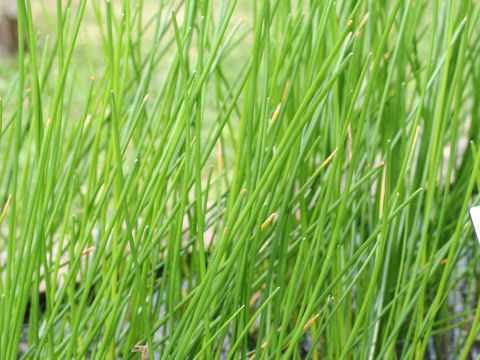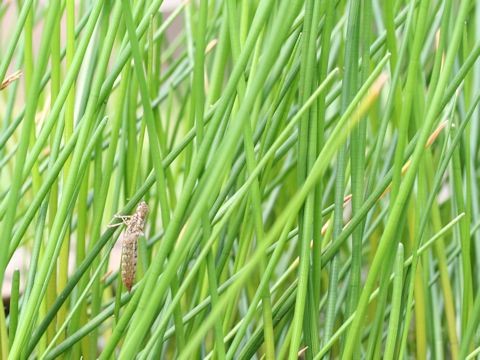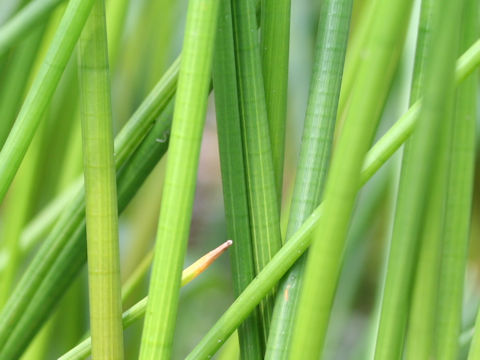
|
The Chinese water chestnut (Eleocharis dulcis) belongs to Cyperaceae (the Sedge family). It is a perennial herb that is native to the Yangtze River coast of China. It is a close relative of the "Kuro-guwai" (Eleocharis kuroguwai) distributed in Japan, and is cultivated in rice paddies from southern China to Southeast Asia, Taiwan, and other regions. The stems are hollow and round, with internal walls filled with spongy material. The leaves are usually only in leaf sheaths and are attached to the base of the stem, and from July to October, small cylindrical spikes are produced at the top of the stem. The 3- to 4-cm-diameter tubers attached to the tips of the underground stems are edible. It is called "地栗" (di li) in Shanghai and "馬蹄" (ma ti) in Cantonese, and is used in Chinese dishes such as stir-fried dishes and red bean paste. In Taiwanese Chinese, it is called "甜荸薺". It is also called "Inu-kuro-guwai" in Japan.
|




